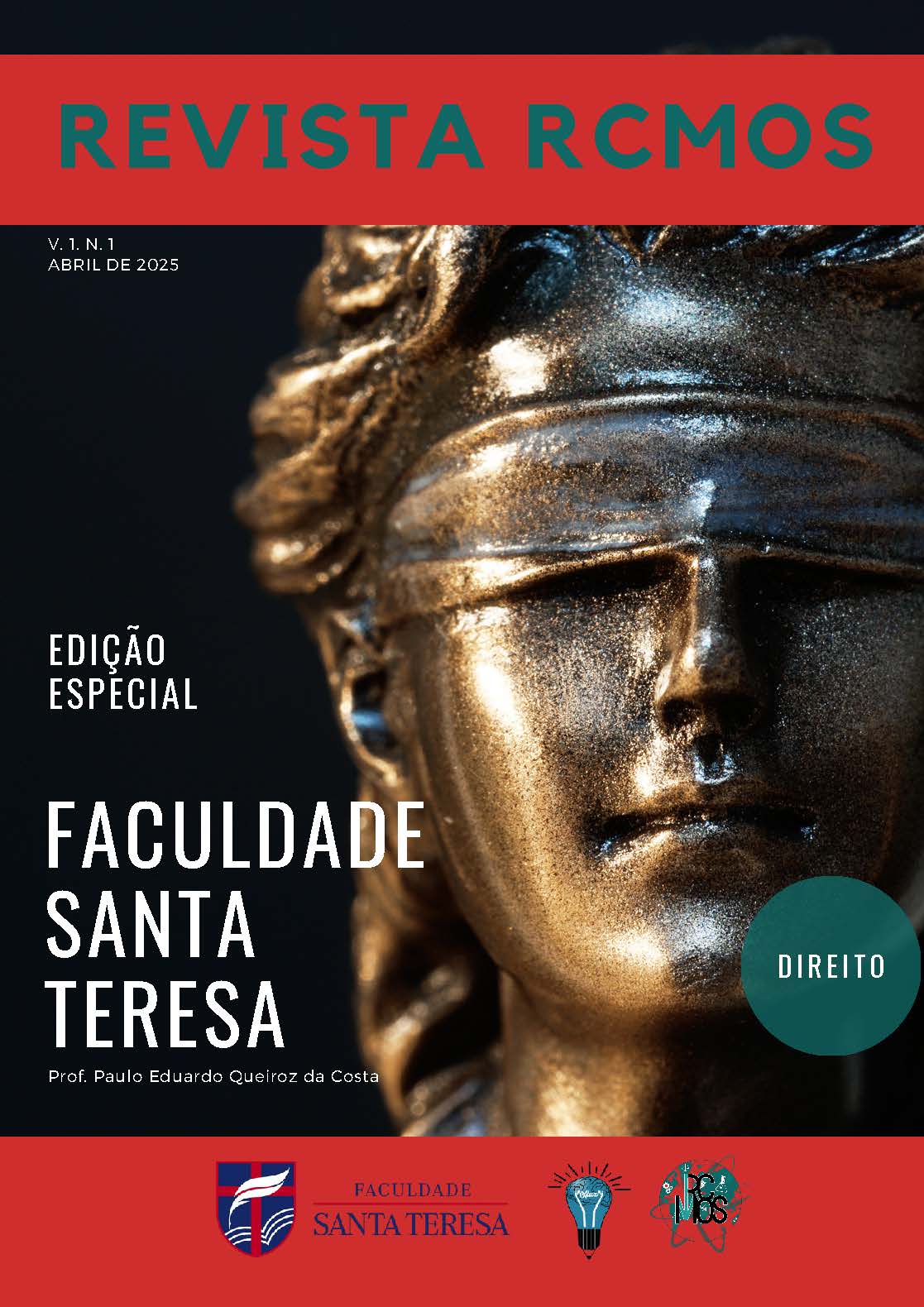Digital inclusion as a democratic pillar: Web accessibility for people with visual impairments on the gov.br portal
Digital inclusion as a democratic pillar: Web accessibility for people with visual impairments on the gov.br portal
DOI:
https://doi.org/10.51473/rcmos.v1i1.2025.969Keywords:
Digital Inclusion. Web Accessibility. Visual Impairment. Citizenship.Abstract
Digital inclusion represents one of the fundamental pillars for the consolidation of democratic citizenship in the contemporary context, especially regarding access for people with visual impairments to digital government platforms. This article aims to analyze the accessibility of the GOV.BR Portal, the main digital environment for public services in Brazil, in light of international and national web accessibility guidelines. The research was conducted through a qualitative approach, using the case study method and document analysis, with emphasis on the Web Content Accessibility Guidelines (WCAG 2.1) and the Electronic Government Accessibility Model (eMAG). Structured navigation tests were carried out using assistive technologies such as screen readers, and aspects such as navigability, compatibility, contrast, textual alternatives, and semantic organization of the content were observed. The results show relevant progress, such as the availability of accessibility resources and the logical structuring of information, but also reveal limitations that compromise the full user experience, such as the absence of alternative descriptions in some elements and inconsistencies in keyboard navigation order. It is concluded that, although the GOV.BR Portal has evolved significantly regarding digital accessibility, there are still barriers that need to be overcome to ensure the effectiveness of the right to information and full digital inclusion. Strengthening accessibility practices must be continuous, incorporating the participation of real users in the improvement process of digital public services.
Downloads
References
ALMEIDA, Fernanda. A inclusão digital como política pública: desafios contemporâneos. São Paulo: Cortez, 2019.
ALMEIDA, Fernanda; PEREIRA, Lucas. A acessibilidade como direito fundamental: desafios e perspectivas. Revista de Direitos Humanos e Tecnologia, v. 7, n. 3, p. 112-129, 2022.
ALMEIDA, Fernanda; SILVA, Laura. Design universal e inovação social: caminhos para a inclusão. Revista Brasileira de Acessibilidade e Inclusão, v. 4, n. 1, p. 58-76, 2021.
BARDIN, Laurence. Análise de conteúdo. 3. ed. São Paulo: Edições 70, 2016.
BRASIL. Secretaria de Governo Digital. Modelo de Acessibilidade em Governo Eletrônico – eMAG. 5. ed. Brasília, 2020. Disponível em: https://www.gov.br/governodigital/pt-br/temas/acessibilidade. Acesso em: 26 abr. 2025.
CASTELLS, Manuel. A sociedade em rede. 11. ed. São Paulo: Paz e Terra, 2011.
CRESWELL, John W. Projeto de pesquisa: métodos qualitativo, quantitativo e misto. 3. ed. Porto Alegre: Penso, 2014.
INSTITUTO BRASILEIRO DE GEOGRAFIA E ESTATÍSTICA – IBGE. Censo Demográfico 2022: pessoas com deficiência. Brasília, 2023.
LIMA, Daniela; FERNANDES, Roberta. Realidade aumentada e acessibilidade urbana: uma revisão sistemática. Cadernos de Tecnologia e Inclusão, v. 9, n. 2, p. 134-151, 2024.
LIMA, Marina; GONÇALVES, Rodrigo. Barreiras de acessibilidade em portais públicos: uma análise crítica. Revista de Inclusão Digital, v. 6, n. 2, p. 44-61, 2023.
MENDES, Carla; CARVALHO, Pedro. Tecnologias assistivas na era da inteligência artificial: novas fronteiras da acessibilidade. Journal of Accessibility and Design for All, v. 13, n. 2, p. 77-95, 2023.
ONU. Convenção sobre os Direitos das Pessoas com Deficiência. Nova Iorque, 2006. Disponível em: https://www.un.org/disabilities/documents/convention/convoptprot-e.pdf. Acesso em: 26 abr. 2025.
PREECE, Jenny; ROGERS, Yvonne; SHARP, Helen. Interaction design: beyond human-computer interaction. 4. ed. Hoboken: Wiley, 2015.
RAMOS, Beatriz; OLIVEIRA, Caio. Tecnologias emergentes e inclusão digital: avanços e desafios. Revista Brasileira de Tecnologias Inclusivas, v. 6, n. 1, p. 20-37, 2023.
SANTAELLA, Lucia. Cultura e artes do pós-humano: da cultura das mídias à cibercultura. São Paulo: Paulus, 2003.
SILVA, Juliana; ARAÚJO, Marta. Inclusão digital e cidadania: uma análise contemporânea. Revista Brasileira de Inclusão Digital, v. 5, n. 2, p. 45-62, 2021.
SILVA, Pedro; MARTINS, Letícia. Tecnologias assistivas e inclusão educacional: avanços e desafios. Revista de Educação e Inclusão, v. 5, n. 1, p. 22-39, 2023.
SOUZA, Rafael; ALMEIDA, Tânia. Barreiras digitais enfrentadas por pessoas com deficiência visual: estudo de caso. Revista de Inclusão e Acessibilidade, v. 7, n. 2, p. 58-74, 2022.
SOUZA, Rafael; MORAES, Ana; LIMA, Eduardo. Acessibilidade digital em serviços públicos: análise crítica de portais governamentais. Revista de Políticas Públicas e Inclusão Social, v. 8, n. 1, p. 78-93, 2022.
SOUZA, Ricardo; OLIVEIRA, João; MENDES, Lucas. Aplicativos baseados em IA e a inclusão de pessoas com deficiência visual. Cadernos de Inclusão e Tecnologia, v. 9, n. 2, p. 110-128, 2024.
WORLD HEALTH ORGANIZATION – WHO. World report on vision. Geneva, 2019.
WORLD WIDE WEB CONSORTIUM – W3C. Web Content Accessibility Guidelines (WCAG) 2.1. 2018. Disponível em: https://www.w3.org/TR/WCAG21/. Acesso em: 26 abr. 2025.
YIN, Robert K. Estudo de caso: planejamento e métodos. 5. ed. Porto Alegre: Bookman, 2015.
Downloads
Additional Files
Published
Issue
Section
Categories
License
Copyright (c) 2025 Nedisson Luis Gessi, Denise Felber Chaves, Mônica Stormowski, Lauri Heckler, Natalie S. Oliveira (Autor)

This work is licensed under a Creative Commons Attribution 4.0 International License.












